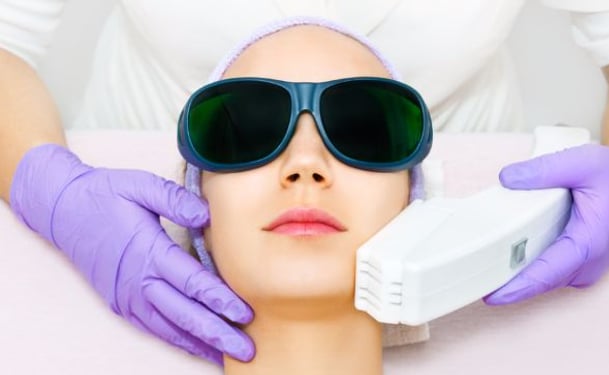The laser therapy treatment called profractional resurfacing is something relatively new, and not everyone is familiar with how this cosmetic procedure works. In the most basic terms, profractional resurfacing uses heat energy to stimulate the promotion of collagen and elastin fibers under the skin, to give the skin a more youthful and vibrant appearance. Doctors use this treatment as a “restorative” solution for damaged skin.
Since there are no injections or invasive surgery involved in profractional resurfacing, there are less complications and side effects reported with these kinds of procedures. However, no kind of cosmetic therapy is entirely risk-free, and profractional resurfacing has its own potential side effects reported by some patients.
Here are some of the most common side effects that some patients experience after a profractional resurfacing laser therapy session.
Skin Discoloration
Immediately after the procedure, the skin may appear excessively red or otherwise discolored. This will usually go away in a few days, but patients can get more particular details from a doctor if this condition occurs.
Peeling
Along with the skin discoloration, there may be peeling of the skin for several days after a profractional resurfacing procedure. The peeling of the skin is part of a reaction related to the new creation of tissues in the skin. It should eventually resolve, leaving a newer looking exterior for the face.
Infection
A small percentage of patients develop infection after a profractional resurfacing treatment. More commonly, patients with existing infections may be told not to take advantage of this treatment, since it can make an infection worse. Some doctors give out antimicrobial ointments to patients after a profractional resurfacing session to help avoid infection in the treated areas.
Pigmentation Irregularities
Some kinds of irregularities with pigmentation are a different side effect than the initial redness of the skin. A few patients who get profractional resurfacing may have some different kinds of pigmentation problems develop as side effects of the process. Consult a doctor about any of these kinds of side effects that occur days after the procedure is done.
Swelling
In addition to the above, the patient may experience some swelling in the affected areas. Doctors should give additional details on how much swelling is normal for a particular patient, and when to return to the office for follow-up care if swelling persists.
Overall, it’s important to get advice from good qualified medical doctors about your particular risks and benefits for profractional resurfacing treatments. It’s also good to explore the cost and financing of these treatments, since most of them are considered elective cosmetic treatment and health insurance companies are reluctant to pay for them. Patients should ask about any possible drug or medical interactions as well, since some drugs and natural substances can get in the way of optimal healing with profractional resurfacing. Finally, patients are advised to stay out of direct sunlight for a month or two after the procedure to avoid some kinds of complications. Keep all of this in mind when considering profractional resurfacing.


